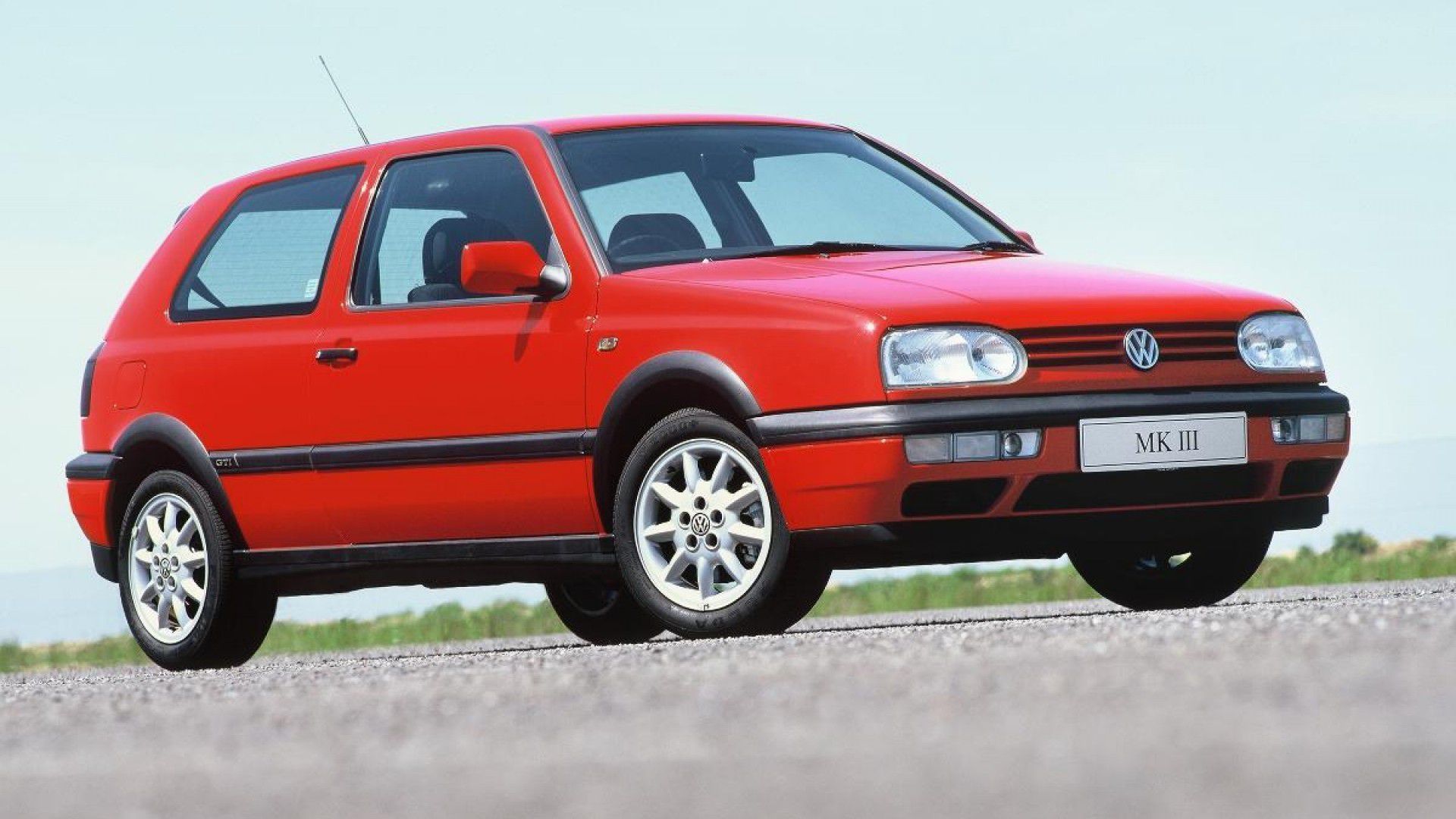Volkswagen Golf Mk3
The third-generation Golf was launched in Europe in late 1991, but in countries such as Brazil and the United States, they only arrived in 1994. At the period from 1993 to 1995 were called “Golf III”, to show that were a different car from the previous version, since they had high insurance prices, because of the lack of security, a problem which aimed to solve the third generation. When the public ambientalizou differentiation, the suffix was removed from name, back in 1996. Nowadays, the MK3 naming only serves to differentiate it from other generations, not part of the name of the vehicle itself.
In Brazil, four versions were marketed this generation: the GL, equipped with four doors and a 1.8L engine with multipoint injection; GLX also with four doors, but a little more refined with other internal finishing options, optional (such as electric sunroof), and an engine 2.0l, also with multipoint injection; and GTis. These models had a more sporty appeal, explained by two doors, fog lamps and differentiated, more bucket seats, and the two powertrain options: a 2.0 8v fitted with cross flow intake (cross-flow or X-flow) and 6 cylinders with 2.8le 172cv, called the VR6, which also fitted to the Volkswagen Passat VR6 B4. This engine was capable of carrying the Golf MK3 with a final speed of 222km/h, impressive for a hatchback 90s, beating its main rivals.
Some variants of the Golf MK3 were only available in other countries.
A three volumes based on the same platform, called Jetta in the U.S. and Europe Wind was one of them. Featured the same engine options and in some moments, was even more popular than the project that was the basis;
An estate (station wagon) was first released, designed to compete with Ford Focus, Opel Astra, among others, who already had representation in this segment;
There was also a Golf MK3 convertible, known as Convertible. He came to replace the Golf Cabrio MK1, MK2 since not had that version.
The Golf MK3 was the one responsible for the increased interest in diesel engines in small cars that befell Europe in the late ’90s, when Volkswagen introduced in 1993 Golf TDi with a supercharged diesel engine 89cv. In 1996 the engine grew to 1.9l TDi, increasing hp to 108HP and proving that diesel engines could be strong, durable and economical. Characteristic of diesel engines, the torque of the TDi came early, with 235Nm @ 1900rpm. Also, there was a naturally aspirated (no turbo) engine 1.9l diesel powered, called SDi version. She offered 63cv, and was used to equip the Cabrio GLS, and became famous for their durability.
Just as happened in previous generations, the Golf MK3 continued available in other countries, even after leaving the line in Europe. In many of them, it was possible to find the MK3 along with its successor, the Golf MK4 in the showrooms of dealers.
In Europe, the Golf Ecomatic was equipped with a diesel engine and a semi-automatic transmission, which dispensed with the clutch. To switch gears, enough to take your foot off the accelerator. In this model, the engine was switched off after 1.5seg downtime to increase the efficiency. To turn it back on, it was enough to step on the accelerator. This technology was unveiled at Polo in the 80s and is still used today in other models of the VW.
In 1996, to celebrate 20 years of the franchise GTi, Volkswagen produced 1000 units of a Golf that despite the same engine the other GTis, brought many other exclusives. They were available in 3 and 5-door, and it was equipped with Recaro seats with checkered GTi emblem embroidered, red seat belts, the classic shift knob in shape of golf ball, hood and steering wheel with red stitching. The details covered red carpets, friezes external, and brake calipers. The wheels were BBS RX II 16 “x 7.5”, similar to the 15 “that equipped the VR6. Besides all this, the model still had chromed twin tips, and foglamps and repeaters darkened. Unique three optional were the sunroof, air conditioning and metallic black paintwork. The price of insurance was the same as conventional GTi, and this sparked even more interest in the model. Six colors were available, and the 1000, 600 were motor 8v, 16v had 150, and 250 came with the TDi engine, with the latter was only sold in the European market, with the exception of the United Kingdom.
The Harlequin Golf, part of the Design Series was created by Volkswagen to be displayed at events and exhibitions. However, due to the appeal of the public, a limited number of them was available. It is believed that between 264 and 275 were produced. There were 4 “base colors”: Chagall Blue, Tornado Red, Yellow and Pistachio Green Ginger, which were determined by the color of the C pillar and roof.
They were produced in a single color and then the ready, the parties were changed, allowing a variety of combinations. Some Harlequins Stranded at dealerships, and eventually painted a solid color. Today, many enthusiasts of this model by looking Harlequins that was painted, using as a reference chassis numbers and padding, which was differentiated in this model, representing the four colors that made him famous.
Unfortunately, no true copy of Harlequin Golf in Brazil was never found.
In the ’90s, Volkswagen sponsored three major European tours and bands to promote this action, released three commemorative editions: the Golf Pink Floyd Edition (1994), the Golf Rolling Stones Edition (1995), and the Golf Bon Jovi Edition (1996 ).
138
